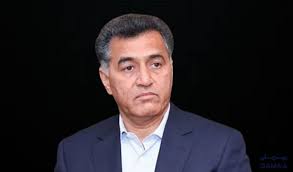The Gaza war worsens as airstrikes destroy homes, hospitals, and vital infrastructure. Humanitarian aid is blocked, leaving millions in crisis.
Israeli Airstrikes:
The latest Israeli airstrikes have had a devastating impact on civilians in Gaza. Although Israel claims it is targeting Hamas and Islamic Jihad fighters, the high civilian death toll suggests that residential areas are being severely affected. With over 400 Palestinians killed, including women and children, families are being torn apart, and many have lost their homes. The destruction of schools, hospitals, and essential infrastructure has worsened the humanitarian crisis, leaving thousands of people without shelter, medical care or access to necessities.
Regional and Political Repercussions:
Political tensions both inside and outside the region have increased as a result of the violence. In several nations, the airstrikes have sparked protests, with many demanding an early end to the conflict. Humanitarian groups and the UN have denounced the attacks and called on both sides to halt the fighting and permit immediate relief to enter Gaza.
The Israeli government’s position of negotiating “under fire” raises the possibility that the military campaign will go on, which might result in further retaliation actions by Hamas and raise the possibility of a bloodier and longer confrontation.
Israeli Justification and Military Objectives:
The Israeli government has stated that its goal is to weaken Hamas’s military capabilities and prevent future attacks on Israeli territory. Prime Minister Benjamin Netanyahu declared that all future negotiations with Hamas would take place “under fire,” signalling that Israel has no intention of backing down.
Border Clashes and Growing Instability:
The attacks come after a series of border clashes and rocket attacks, which Israel claims were launched from Hamas-controlled areas. The situation in Gaza remains unstable, with continued bombings and ground operations being reported in northern and central areas.
Widespread Destruction:
The latest Israeli airstrikes have left vast areas of Gaza in ruins, with entire neighbourhoods reduced to rubble. Homes, schools, and medical centres have been severely damaged, making it nearly impossible for civilians to find safety. The destruction of communication networks and transportation routes has further isolated Gaza, delaying rescue efforts and emergency aid. Many families are now displaced, forced to seek shelter in overcrowded and unsafe areas with little access to food or clean water.
Trauma to the Mind and Its Aftereffects:
In addition to the immediate physical devastation, the conflict has deeply damaged Gaza’s population’s mental health. A large percentage of the impacted civilian population are children, who are suffering from extreme trauma as a result of ongoing bombs and the death of loved ones.
Prolonged exposure to conflict may cause long-term emotional distress, which would make rehabilitation even more challenging, according to mental health specialists. The shortage of essentials and the long-lasting psychological impacts of conflict will continue to plague the people of Gaza unless there is immediate international assistance.
Impact of War on Gaza’s Population:
The resumption of war has worsened the already severe humanitarian crisis in Gaza. The Israeli blockade, which has been in place for years, was further tightened on March 2, 2025. This has caused severe shortages of food, medicine, and fuel, leaving hospitals unable to function properly.
Increased Hardship for Civilians:
The renewed conflict has made daily life in Gaza unbearable for millions of residents. With the blockade restricting essential supplies, people are struggling to find food, clean water, and medical treatment. Hospitals are overcrowded, running out of critical supplies, and unable to treat the growing number of injured civilians. Many families have lost their homes due to airstrikes, forcing them to seek shelter in already-packed refugee camps or damaged buildings.
Mass Displacement and Health Emergency:
Thousands of people are fleeing from the most affected areas, but with Gaza’s borders closed, they have nowhere to escape. The healthcare system is collapsing, with overcrowded hospitals, lack of electricity, and medicine shortages putting thousands of lives at risk.
United Nations Warning:
According to United Nations reports, the situation in Gaza is turning into a humanitarian catastrophe. The UN has urged for immediate aid deliveries, but the ongoing conflict makes access difficult. Reports indicate that many children are suffering from malnutrition, and there is a growing fear of widespread disease outbreaks due to the destruction of water and sanitation systems.
Global Reactions to the Conflict:
The international community has responded with strong condemnation and concern over the rising casualties. Several world leaders have demanded an immediate ceasefire, while others have taken sides in the conflict:
- Turkey, Iran, South Africa, France, Saudi Arabia, and Egypt have strongly condemned Israeli airstrikes, calling them excessive and indiscriminate.
- The United Nations has urged both sides to stop the violence and allow humanitarian aid to enter Gaza.
- The United States has supported Israel’s right to defend itself but also urged restraint to avoid civilian casualties.
- European Union leaders have called for de-escalation and a return to diplomatic solutions.
Ongoing Conflict Despite Global Appeals:
Despite global appeals for peace, Israeli operations continue, and Hamas has vowed to retaliate, raising fears of a longer and more destructive war.
Roots of the Conflict:
Blockade and Cycles of Violence:
The Gaza Strip has been a hotbed of Israeli-Palestinian hostilities for decades. Israel enforced a stringent blockade on Gaza in 2007 after Hamas seized power, claiming that it was required to stop the flow of weapons into the region. Since then, there have been recurrent cycles of conflict in which Israel has responded with airstrikes and military operations to Hamas rockets fired into Israel. Thousands of people are killed and extensive damage is caused by every round of warfare, especially in Gaza, where the population is most affected.
January 2025 Ceasefire Collapse:
The recent escalation began after the collapse of a ceasefire agreement in January 2025, leading to renewed clashes and tensions. As both sides refuse to compromise, the situation remains highly volatile, with no clear end in sight.
Conclusion:
The recent conflict in Gaza has once again highlighted how precarious regional peace initiatives are. Civilians are caught in a never-ending cycle of carnage as airstrikes persist, the humanitarian crisis deteriorates, and the international world tries to find a solution.
The suffering will probably go on without diplomatic attempts, a sustained truce, and a dedication to peace talks, which would further exacerbate the region’s already existing tensions and instability.

























